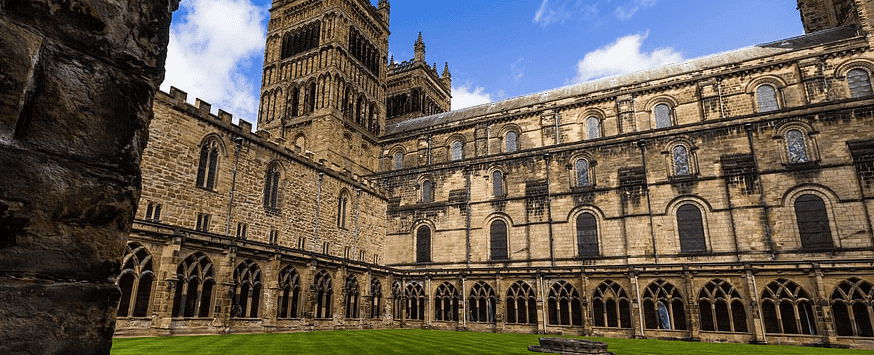Meeting Newman in the Conversion of Bill Evans (1933–2017): A Review of Time to Delay No Longer

Time to Delay No Longer: A Search for Faith and Love. BILL AND WIN EVANS, EDITED BY RUTH EVANS. Leominster: Gracewing, 2022. Xviii+275 pages. Paperback: £20. ISBN: 9780852449271.

Time to Delay No Longer is, as its subtitle suggests, a true search for faith. In this work, the late Bill Evans (1933–2017) endeavors to recount his conversion to the Catholic faith. His account of conversion centers around a profound systematic analysis of the Catholic Church and its claim towards religious authority. Bill’s conversion was not epiphanic; he was not made witness to truth as Paul was on the road to Damascus, or as Constantine on Milvian Bridge. Rather, his story is one of an intellectually gifted man and his meticulous search for the one church that captured the truth of Christ most authentically.
Bill studied English literature at Durham University, and here he refined his innate intellectual sensitivity and met his wife-to-be, Win. Win’s significance cannot be overstated, for without her (and Ruth, daughter of Win and Bill) this book would never have materialized. At the time of Bill’s death in 2017, Time to Delay No Longer remained unfinished. However, with great care and acumen, Win and Ruth supplemented the unfinished manuscript, including Win’s synchronous accounts of events mentioned by Bill, Ruth’s enlivened testimonies to her father’s brilliance, and a supplementary record of Bill’s correspondence with his nephew-in-law, Edward Goldwyn. The latter functions as an enlightening epitaph in praise of Bill’s influence. Though one may lament the loss of Bill and the impact of his death on the work, we must take care to look at the bright side. If Bill had finished the book, we may never have been exposed to the thoughts of Win and Ruth. Their additions skillfully flesh out lacking portions of Bill’s conversion and display words that are just as, if not more, beautifully written than their husband/father’s.
The combined effort of three distinct authors in one book results in some structural confusion. The book can be reasonably divided into three sections: 1) the chronological account of Bill’s life and search for truth, 2) Bill’s theological investigation of religious practices, and 3) an epilogue consisting of Ruth’s closing remarks. The initial portion of the book is presented through Bill and Win’s alternating accounts of a specific time in Bill’s life. As such, the reader quickly develops a feeling of ceaseless repetition. As previously stated, Win’s testimony is invaluable and wonderfully articulated, but a reorganization of the contents may have helped the book’s general readability.
The influence of St. John Henry Newman on Bill is most apparent during the middle section of the book. Bill specifically credits Newman’s Apologia Pro Vita Sua for his acceptance of Catholic Doctrine. Newman’s theology spoke to Bill on two levels. On the one hand, he was drawn to Newman’s intense imagery, particularly of “the Catholic Church as the true bride of Christ” (66). As an English teacher and an avid theatergoer, Bill frequently enjoyed literary metaphors and symbolism. Newman’s poeticizing certainly resonated with Bill’s aesthetic side.
On the other hand, Bill also found intellectual grounding in Newman’s theological arguments. Most notably, Bill accepted the necessity of Apolistic succession, and he agreed with Newman that the Catholic Church has maintained this succession through a strict adherence to Scripture. Most of all, however, Bill was struck by Newman’s insistence on the leap of faith required by the searching mind once fully at its intellectual limits. Most often, people are turned toward Christ through an opening-up of the heart, not a logical argument, an idea of which Bill takes from Newman’s Idea of a University. Thus, after reading the likes of Newman, Augustine, Ullman, and Rahner, Bill was received into the Catholic Church in September 1962.
Where this book lacks in critical Newman scholarship, it excels in depicting the general impact of Newman outside of scholarly circles. Readers are made to witness the emotional impact of Newman’s writings on lay persons, and the book is thus perhaps best suited for readers interested in the non-academic reception of Newman’s teaching.
Time to Delay No Longer is, above all, a heartwarming account of an earnest man’s theological endeavor to find the truth of Christ in a worldly church (and a picturesque love story, to boot). Bill’s search benefitted immensely from Newman, and by reading this book, Newman scholars are reminded of the Cardinal’s influence beyond the confines of scholarly discussion. Many thanks to Win and Ruth Evans for bringing Bill’s story to the world, and may he rest in peace.
Austin Cottrell
Austin Cottrell received his Masters in Philosophy from Duquesne University. In his free time he enjoys reading and spending time with his partner Michaela and their two cats.
QUICK LINKS

